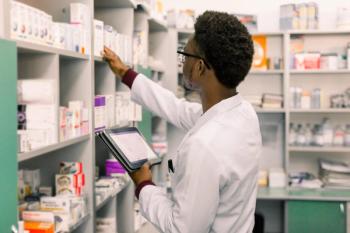
- Drug Topics October 2019
- Volume 163
- Issue 10
Pharmacist Collaborations Must Extend to Dentists
Common collaborations include allergy, antibiotic, and opiate consultations.
Excellent communication between pharmacists and other healthcare providers is key to providing the best patient care possible, and dentists are no exception.
While dentists may not be the most common healthcare professionals pharmacists work with, there are a few areas where collaboration is relatively common: allergies and opioids (see Table 1).
Communication Counts
Alan Tanabe, PharmD, staff pharmacist in Ann Arbor, MI, feels that dentists and pharmacists can work well together. “Occasionally, I will come across a prescription issued for amoxicillin for a patient with a documented beta-lactam allergy, or a prescription for ibuprofen for a patient who is already taking another NSAID for a different reason, but these issues are usually resolved quickly with a call to the prescribing dentist,” he said. He finds that most problems are quickly resolved as long as the issue is presented respectfully and backed by evidence-based information if needed.
Trending:
Although it can be difficult to juggle these acute prescriptions with everything else happening in a busy chain, Tanabe says that “we will triage the needs of a patient, especially post-procedure.”
In terms of opioid prescribing by dentists, Tanabe says that he has observed most dentists being very conscientious about keeping the number of opioids limited to what a patient will actually need.
Tanabe believes in the importance of “open communication and team-approach.”
Building relationships is critical: “it is always difficult to truly understand another practitioner’s field of practice. Dentists who frequently use your pharmacy and speak with and have a relationship with a pharmacist will be more likely to be able to communicate appropriate expectations with their patient,” Henriksen says.
Read More:
Henriksen has noticed a shift in prescribing in recent years. “For opioid-naive patients who are having a simple dental procedure, ibuprofen and other NSAIDs have been shown to provide excellent pain relief,” she says. “With the increased focus on addiction from prescription opioids, dentists are more conservative with prescribing painkillers.”
When an issue arises with an allergy, drug interaction, or any other issue, Henriksen finds that most dentists are open to collaborating with the pharmacist to ensure safe and appropriate therapy.
Continue reading on page 2...
With the opioid crisis in the headlines every day, dentists must be prudent in keeping up with state laws and changes that occur. Dr. Lizzack always checks the state prescription monitoring program (PMP) prior to prescribing, although he emphasizes that he tries to keep narcotic painkiller prescriptions to a minimum. “If I prescribe an opioid, I thoroughly explain that this is an addictive substance and should only be taken if necessary-in addition to having them sign the opioid consent form. I also give patients a non-narcotic pain protocol they can follow that consists of taking ibuprofen and acetaminophen together–this seems to work really well,” he says.
Commander Burke stresses that state monitoring programs are a huge deterrent and “both pharmacists and dentists should use these programs to the max.” He reminds pharmacists to automatically check the state PMP for any new patient with a controlled substance prescription.
Trending:
Commander Burke says that patients should be told that opioid painkillers are very addictive, should only be taken as needed, and that it is a crime to share with anyone else. Patients should be counseled to dispose of medications properly if not needed (such as a take-back program at a local law enforcement facility), as opposed to letting medications sit in the medicine cabinet. “Many pain medications are in cabinets because the patient got them after a dental procedure and never used them,” he says. “If the patient decides to keep painkillers that are not needed, they should at least be locked up or otherwise secured.”
The
In this time of the opioid epidemic, pharmacists must walk a careful line. We must take care of our patients while also following state and/or company guidelines regarding opioids. Because opioid addiction can happen very quickly to the most innocent of patients, it is very important that patients understand the possible risks that go along with these powerful painkillers.
Read More:
As busy as we are, we have to take the time to take all the necessary steps, such as checking the state PMP and consulting with providers when necessary. Respectfully and kindly explaining to frustrated patients that this is part of our job to make sure they are safe, and nine times out of ten the patient will appreciate our concern.
Articles in this issue
about 6 years ago
The Truth About Statinsabout 6 years ago
Opinion: Color Coded Inhalersabout 6 years ago
Contemplating the Future of List Pricesabout 6 years ago
New Drug Review: Tafamidis Meglumine for Cardiomyopathyabout 6 years ago
Life-Altering Gene Therapy Pipeline Poses Challengesabout 6 years ago
Solving the Drug Shortage Burdenabout 6 years ago
Providing Healthcare to Transgender Patientsabout 6 years ago
State Laws May Determine Access to Pharmacy-based PrEP Clinicsabout 6 years ago
Official CVS/Aetna Merger: Greater Convenience, Less Cost Reformabout 6 years ago
Alternative Approaches to OpioidsNewsletter
Pharmacy practice is always changing. Stay ahead of the curve with the Drug Topics newsletter and get the latest drug information, industry trends, and patient care tips.





























































































































